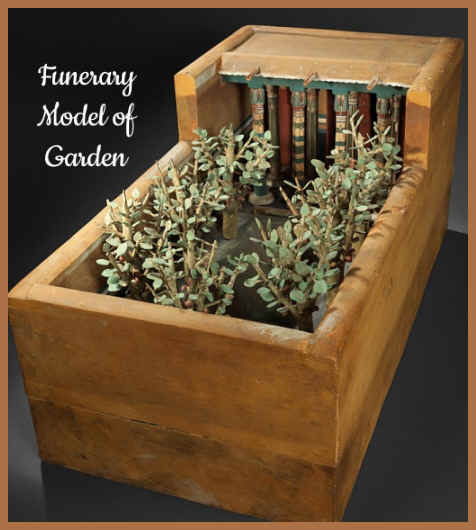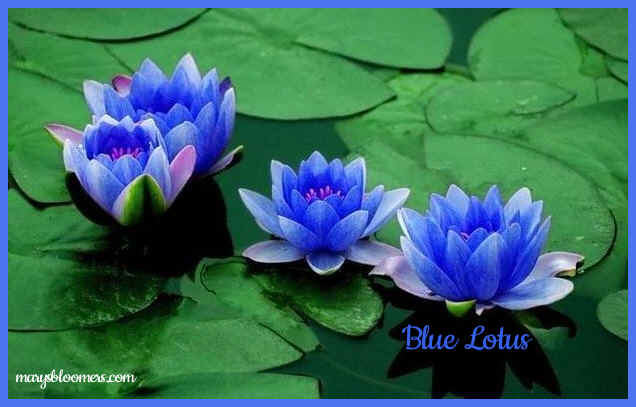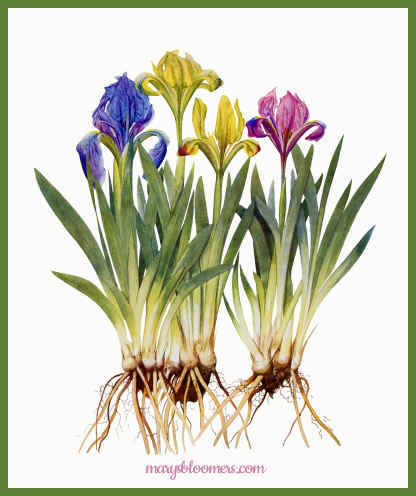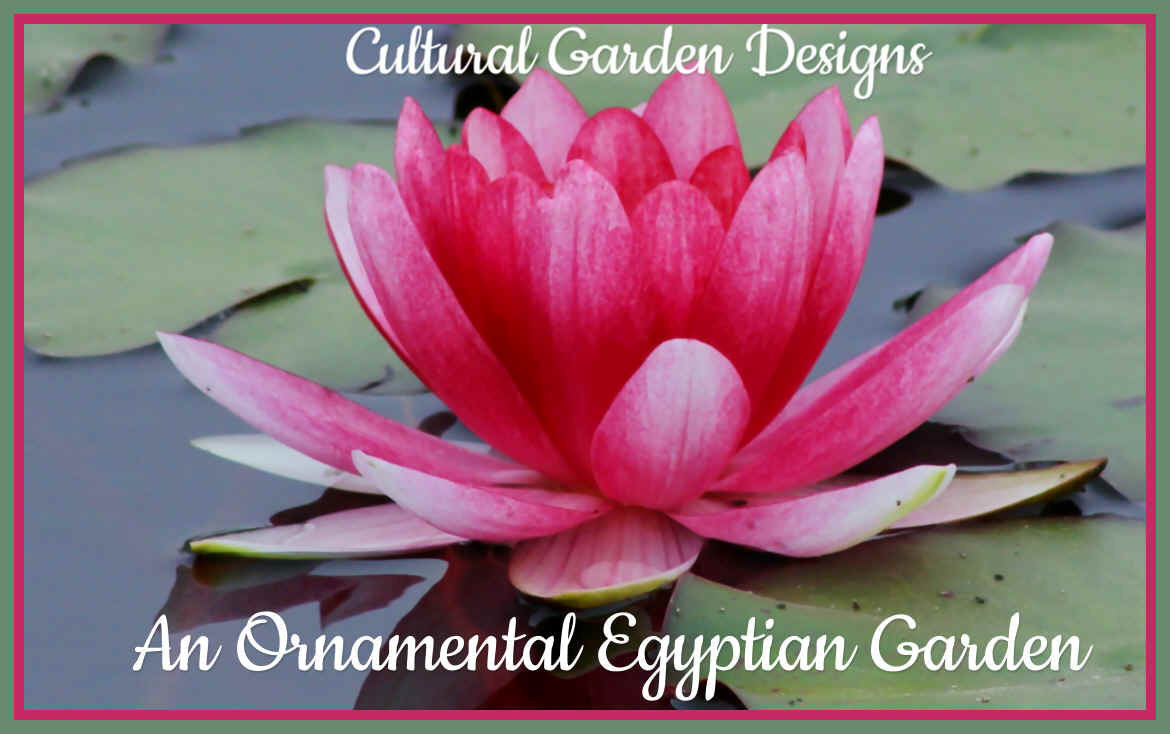 |
|
Design A Formal Egyptian Pleasure Garden In Any Size Space
You don't have to create a large garden. You can incorporate Egyptian atmosphere into an Asian-style garden, Water Garden, Serenity Garden, or Fruit Tree Garden. Egyptian-style potted ornamental potted trees like pomegranates and figs work well in many parts of your garden, including the Biblical Garden design, so you can spread it out and easily add decorative items. It's too cold here in the north to grow a lot of the African hot-weather plants, but there are lots of hardy plants that can be grown in Zone 6 gardens, and others can be grown in big stone, cement, clay or resin pots, brought indoors for winter, and used as awesome houseplants. Those of you in the hot U.S. climates can grow more of these plants - especially palms - outdoors all year long. History of Egyptian Gardens I like to combine the history of ethnic and theme gardens, with the real-life designs and plants that can be used today, in my articles. And this is a nice, long, fascinating look at ancient Egyptian gardens and gardeners. The history and character of gardens in ancient Egypt, like all aspects of Egyptian life, depended upon the Nile, and the network of canals that drew water from it. Water was hoisted from the Nile in leather buckets and carried on the shoulders to the gardens, and later, beginning in about the 4th century B.C., lifted from wells by hoists with counterbalancing weights called "shadow" in Arabic. Gardening In Ancient EgyptGardening in ancient Egypt was very hard work; gardens required constant irrigation, with water carried or lifted by hand, weeding, and tending, including the artificial propagation of date palms, which required great skill. Great effort was also needed to keep birds from eating the crops. Ingenious traps were set to catch the invading birds.The earliest gardens were composed of planting beds divided into squares by earthen walls, so the water could soak into the soil rather than be lost. This is the same method used in ancient Native American Pueblo Farming, called Waffle Gardens. Gardens belonged to temples or the residences. Secular gardens were located near the river or canals and were used mainly for growing vegetables. Creating an Egyptian design theme garden in your backyard design is as simple as incorporating the plants and elements of design from this hot region. A water garden or element adds to the design. Water was an important feature. A bowl with a solar fountain in it, a bog garden with Papyrus plants, or just birdbaths with a floating solar fountain would do it.
m a civilization born around the fertile
offerings of a river and its delta, water features are a staple of Egyptian
garden design. Rectangular
ncept that's very popular with landscapers today. Ancient Egyptian gardens were formal and ornamental, and often consisted of both trees and other plants. There were about eighteen varieties of trees grown by the Egyptians. Popular trees included the sycamore fig, pomegranate, nut trees and jujube. Willows, acacia and tamarisk were also there. From an enclosed yard with a few fruit trees to botanical and zoological gardens with exotic trees, ponds, often stocked with fish, and caged animals and birds, gardens are depicted in many tombs. Excerpt from"The Gardens and Ponds of Ancient Egypt": "The formal layout of the Persian garden, with an artificial pond mirrored the glittering splendor of a rich facade beyond it, had already been carried out to perfection in Egypt, at least as early as the New Kingdom. Sacred gardens had ponds, papyrus, flowers and vegetables, as represented schematically in ancient tomb drawings. There were exotic trees that were brought from the new countries subdued during the New Kingdom and planted in sacred "botanical" gardens. In the country, the houses and palaces were set in a large garden surrounded by a wall. Sometimes there was more than one pond, and a garden could be divided into areas. As an example:
Temples were provided with gardens in decorative layouts, as a source for flowers, vegetables, wine and olive oil, thus providing necessary ingredients for just about anything. Houses, palaces, temples and chapels in the paintings of the tombs nearly always have a garden next to the building. We very often find a whole, elaborate layout detailed, and thus a good enough picture of the various types of gardens during the New Kingdom can be reconstructed from this pictorial evidence. The actual remains of gardens are very scarce. This is, in part, due to that earlier excavators seldom cared to look for them, and ruined whatever evidence might remain. Ancient Egyptians themselves devastated Syrian gardens, and took some gardeners captive - and Syrian buildings also inspired Egyptian architects. Palace gardens Palace gardens first appeared in Egypt just before the Middle Empire (2035–1668). These gardens were very large in scale, and were laid out in geometric patterns. The ponds of palace gardens were enormous and numerous. In the second millennium BC, the garden pond of King Sneferu was large enough for boats rowed by twenty oarsmen. The rulers of ancient Egypt, such as Queen Hatshepsut (1503–1482 BC) and Ramses III (1198–1166 BC), used pots to bring back to Egypt new kinds of trees and flowers discovered during their conquests in Libya, Syria, and Cyrenia. Flowers, especially, were an essential part of temple and tomb gardens. In the King's palace, a large garden forms the central element, laid out symmetrically about a north-south alley, leading from a north entrance pylon and accessible from the bridge and from a gateway on the Royal Road. It is surrounded on three sides by the buildings of the servants, the royal living quarters and the magazines. On it's western side there are two lower terraces, one having an arbor with a roof, and probably a "chamber-of-trees" similar to the one mentioned by texts. We know of very few depictions of gardens that surround ordinary houses, but several literary descriptions of a country estate mention the lush cultivated grounds around a villa of the New Kingdom. One owner, who obviously enjoyed his garden tells us that, "You sit in their shades and eat their fruit. Wreaths are made for you of their twigs, and you are drunk with their wines." Nothing can be found about the formal layout of gardens around the landing quays of palaces or temples. But the data of temple paintings and drawings seems to be fairly exact: Landing quays were the initial approaches to the buildings from the Nile, and they had to have benefited as much as the processional avenues from the decorative effects of a formal garden layout. A text from the reign of Ramses II, referencing the Temple of Luxor's quay, explains that, "A wall was before it of stone over against Thebes; it was flooded; and the gardens were planted with trees". These are presumably the gardens on both sides of the quay walls. At least two depictions of landing quays feature layouts of gardens. Gardens were not simply for pleasant environs to the Ancient Egyptians. There were many symbolisms associated with trees. For example, the Papyrus and Lotus plants were symbolic of the two regions of Lower and Upper Egypt. The villas of the rich inhabitants of the city also had extensive gardens where a chapel or kiosk marked the crossing of the axis through the entrance gateway with that of the house. Gardens were secluded corners, sensuous places where lovers could meet. In Akhenaten's North Palace there was possibly a reserve for animal species and a botanical garden. The main element in the plan is an extensive water court surrounded by trees. The rear central group of buildings is the formal apartment, with a private suite bordered on the north by a sunken garden surrounded on three sides by a columned portico and contiguous cells. Here again, the location of the garden is to the north of the living quarters, and there is a corner staircase leading up to the roof of the portico, where a pergola (trellis) must have afforded an enjoyable view of the precincts. The animals were kept in separate courts and rooms. Gardens also provided food, including vegetables and wine. A formal layout was followed in the large palace gardens. Usually the approach was symmetrical, usually with a pond on either side of the axis, bordered with rows of trees. At Amarna, where the ground is not arable, trees were planted in pits filled with humus and bordered with a round coping. At the rear of the various groups of buildings a large area was laid out as an independent garden around a square pound with sloping sides. In one of the pond's corners, a stairway descends to its bottom. A deeper basin opening in the bottom is probably filled with infiltration water. Interestingly, the distribution of the trees seems particularly informal and may have been another aspect of the Amarna trend toward freedom and naturalism in art. Private chapels were built by rich people in their gardens at Amarna or on the bank of a river or canal. Often the chapel stands at the rear of the enclosed garden on a higher terrace, with a rectangular pond flanked by two rows of sycamore trees, or what seems to be two rows of tall jars surrounded by climbing growth. Even in tombs, there are texts that depict gardens. Ineny, an architect who lived apparently during the reigns of Amenhotep I through Hatshepsut, describes his garden as being in the West, and his yearning "to walk in his garden of the West, cool under its sycamores, admire its grand and beautiful growths of trees, which he had made while he was on earth". The various trees in his garden included 90 sycamores and 170 date palms located in Western Thebes. The garden was very often on the north side of the main hall of the living quarters, probably to allow the cool breeze from the north to carry the sweet fragrance of the flowers to the king and to provide a cool shaded garden. There must have been some device in the upper stories of the buildings, consisting of windows or pergola on the terrace, from which the view on the garden could be enjoyed. Many depictions in tombs show what might be the standard garden: Typically, a symmetrical layout was used with a rectangular or T-shaped pond in front of the house on the main longitudinal axis. This garden would then be surrounded by rows of trees of various species, possibly alternating in the same rows. It was not uncommon to find a pergola bordering the main alley along the axis or surrounding the pond. It should be noted that many times these ponds were stocked with fish, and at times included exotic examples. Fruit trees have their leaves or branches supported on the trelliswork of the pergolas. The shortest species of trees are planted nearest the pond, while the tallest, such as doum palms and date palms, are in the outside rows. This arrangement provided a graded perspective about the canter of the garden. The temples of Amun were favored with gardens. The Papyrus Harris I contains records of the endowments and riches of the temples in the reign of Ramses III. Some of the figures cast light upon the very extensive properties. Ramses III more than once stated that he donated gardens "equipped" with "groves and arbors, containing date trees; lakes supplied with lotus flowers, papyrus flowers, isi flowers, the flowers of every land, dedmet flowers, myrrh, and sweet and fragrant woods for thy beautiful face". We are even told of the restoration of gardens by him: "I made to grow the august grove, which was in its midst; I planted it with papyrus in the midst of the Delta marshes, [as] it has begun to decay formerly.
|
Read more at Gardening Know How: Egyptian Garden Design – Creating An
Egyptian Garden In Your Backyard https://www.gardeningknowhow.com/special/spaces/egyptian-garden-design.htm
The Pleasure GardensBeginning during the time of the New Kingdom, pleasure gardens became a common feature of luxury residences. According to paintings in tombs in Thebes from the 18th Dynasty (1552–1296 BC), gardens of that time had a standard design. They had a pond, usually rectangular, in the center, filled with colorful fish, with lotus blossoms in the water and flowers around the edges. Around the pond were successive rows of trees, including sycamores, palms, and grenadiers, alternating with flower beds. The edges of the water basins were sloping, with a stairway down one side so gardeners could collect water for irrigation. Water features are a staple of Egyptian garden design. Rectangular fish and duck ponds lined with fruit-bearing trees were commonplace in the ancient gardens of wealthy Egyptians. Fed by irrigation channels, which eliminated the need to manually transport water from the river, man-made ponds allowed ancient Egyptians the opportunity to expand agriculture away from the flood basin of the Nile. Shade was an important feature of the garden, provided by trees and by grapevines supported between columns. Describing these gardens, Shaw and Nicholson wrote: "The overall effect would have been one of cool shade, heavy with the fragrance of the flowers and the trees. Gardens are therefore one of the most frequent settings of Egyptian romantic tales." Walls constructed of adobe brick were another common feature of Egyptian garden design. Built to differentiate garden spaces and protect vegetables and fruit crops from animals, walls were part of the formal layout of the garden. Like ponds and housing, gardens were rectangular and reflected the Egyptian’s understanding of complex geometric concepts. |
|
|
water features are a staple
of Egyptian garden design. Rectangular fish and duck ponds lined with fruit
bearing trees were commonplace in the ancient gardens of wealthy Egyptians.
Fed by irrigation channels, which eliminated the need to manually transport
water from the river, manmade ponds allowed ancient Egyptians the opportunity
to expand agriculture away from the flood basin of the Nile
Read more at Gardening Know How: Egyptian Garden Design – Creating An
Egyptian Garden In Your Backyard https://www.gardeningknowhow.com/special/spaces/egyptian-garden-design.htm
|
Funeral Gardens Funeral gardens were miniature versions of house gardens that were placed in tombs with the deceased. They usually had a small square house or pavilion with wooden columns, surrounded by a wall, and within the wall, was a basin surrounded by a row of trees. The house resembled the kiosks in gardens, where the owner would play checkers or relax. The dead were traditionally surrounded by the objects they would have enjoyed in life, and it was expected that they would continue to enjoy their gardens in their afterlife. The inscription of one tomb said: "You promenade at your ease by the lovely bank of your pond; your heart rejoices from your trees and is refreshed under your sycamores; your heart is satisfied by the water from your wells that you made so that they would last forever." Trees and plants in the Egyptian garden |
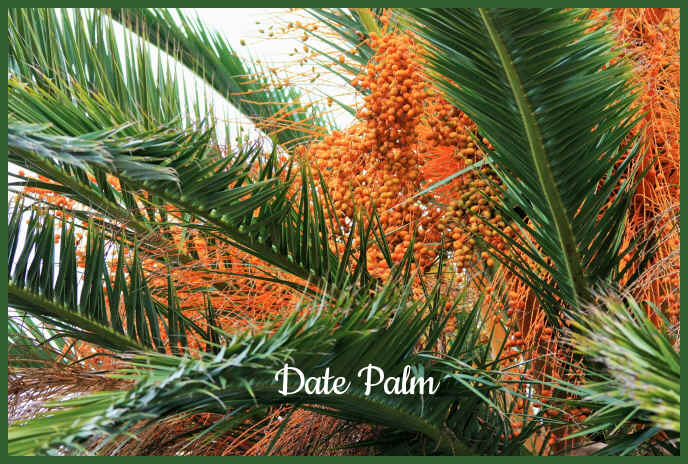 |
|
Trees were used in the gardens to produce fruit and for shade. Nineteen different species of trees were found in the gardens of Ineni, the architect to the Pharaoh Thutmose I (1504–1492 B.C.). The pink flowered tamarisk, acacia and willow trees were common in gardens. The sycamore (Ficus sycomorus) and tamarisk trees were sometimes planted in front of temples, as they were at the temple of Nebhepetra, from the 11th century BC. The ancient Egyptians cultivated Ficus sycomorus from Predynastic times, and in quantity from the start of the third millennium. It was believed to be the ancient Egyptian Tree of Life, planted on the threshold between life and death. Zohary and Hopf note that "the fruit and the timber, and sometimes even the twigs, are richly represented in the tombs of the Egyptian Early, Middle and Late Kingdoms." Some of the caskets of mummies in Egypt are made from the wood of this tree. The most common fruit trees were date palms, fig trees and doum palms (Hyphaene thebaica). The persea tree was considered sacred, and was found in both temple gardens and residential gardens. The pomegranate tree was introduced during the New Kingdom, and was prized for its aroma and color. Other fruits grown in the gardens were jujube, olives, and peaches. Vegetables were grown for food or for ceremonies. Cos lettuce was considered sacred and was connected with Min, the deity of reproduction, and was believed to be a powerful aphrodisiac. Grapes were used to make raisins and wine. Tomb paintings show that grapevines were sometimes planted on top of pergolas to provide shade to the garden. Flowers were raised in gardens to make decorative bouquets and for use in religious ceremonies. Common garden flowers were the mandrake and the daisy, chrysanthemum, anemone, and poppy, jasmine, and the rose. Flowers, especially, were an essential part of temple and tomb gardens. Ancient Egyptians believed floral fragrances indicated the presence of gods. They symbolically adorned and garnished their deceased with flowers prior to entombment. In particular, papyrus and water lily embodied the ancient Egyptian’s beliefs of creationism, making these two species crucial plants for Egyptian gardens. The shade-giving trees with their dense, almost evergreen foliage such as date palm (Phoenix dactylifera), all bore fruit. The smaller fruiting trees beneath the palms were probably the common fig (Ficus) or pomegranate (Punica).
The vineyard of long, trellised arbors provided a wine harvest and the rectangular, papyrus-bordered pools containing lotus flower and waterfowl also became storage tanks for fish, which were fed and kept for eating.
Almost all Egyptian gardens were places of relaxation. A combination of poolside shaded areas to sit in summer, along with sunny areas in winter, surrounded by flowering woody/herbaceous plants, with vines and edible fruits in abundance. Flowers and herbs were cultivated in these gardens. Egyptian ponds and basins were often decorated white and blue lotus (Nymphaea caerulea) and with papyrus. The pond was often surrounded by walls or columns supporting grapevines. The walls and columns were decorated with colorful paintings of people, animals, and plants such as the poppy and rose. Temple gardensBeginning during the New Kingdom, gardens
were attached to more luxurious residences and were sometimes enclosed by walls. Temple gardens often had rows of fig trees and sycamores (the tree sacred to the goddess Hathor), tamaris, willows, or palm trees. Rows of trees sometimes stretched for several kilometers, connecting several temples. The temples themselves had esplanades planted with trees. When rows of trees were planted far from the river, wells had to be dug ten meters deep to reach water for irrigation. During the time of Amenophis III, some temples were devoted to a goddess in the form of a tree, with a trunk for a body and branches for arms. This goddess was believed to carry water to the dead to quench their thirst. Temple gardens often were the homes of animals sacred to the gods, such as the ibis and the baboon. Flowers were part of all the religious ceremonies during the time of the god Amon. These gardens also produced medicinal herbs and spices such as cumin, marjoram, anise, and coriander." Ponds and pools were a common feature of the residential gardens of the wealthy and powerful of ancient Egypt, and are shown in a number of tomb paintings. Sometimes, as in the garden of Hatshepsut’s mortuary temple at Deir el-Bahri, the pond was in the shape of a T, with one part of the T connected to a river or canal. The water was usually hoisted into the pond from the river by hand, or using a shadouf. Fish for food and ornament were raised in the ponds. They also were the home of migrating water birds. The flowers and herb beds needed irrigation to sustain themselves as well as vines and fruiting orchards. To achieve this, canals were dug from the river, some deep enough for riverboats, others designed as ditches from which water could be carried to the crops or to storage wells and pools. These ditches, either T-shaped or rectangular, often became decorative elements in the garden.
Some paintings show trees surrounded with rims built of earth to conserve the moisture. All plans and pictures of the kitchen gardens indicate that they were formal and geometric, almost checkerboard. In design, they were the prototype of all gardens throughout Europe and the Near East for over three thousand years. Native American Pueblo Waffle Gardens utilized this concept for harvesting rainwater for farming. The legacy that the Egyptian garden leaves to us is irrigation, water ditches, pavilions, arbors, formal and geometric layouts. Special note goes to the union of flowering, fruiting and herbal plants together. Temples often had extensive gardens. The Temple of Amun at Karnak had twenty-six kitchen gardens, alongside a very early botanical garden, which, according to an inscription, contained "all kinds of beautiful flowers and bizarre plants which are found in the divine land which His Majesty has conquered." The hymns painted on the walls of tombs show that religious ceremonies centered on the cycles of nature and the changing seasons. Flowers such as white and blue lotus were grown in the ponds for decoration and for ceremonies, and papyrus was known to grow at Deir el-Bahri. Later, during the Persian occupation of Egypt, the pink lotus was introduced.
The Blue Lotus is Egypt's
national flower. Flowers were abundant in ancient Egyptian gardens, and included daisies, cornflowers, mandrakes, roses, irises, myrtle, jasmine, mignonettes, convolvulus, celosia, narcissus, ivy, lychnis, sweet marjoram, henna, bay laurel, small yellow chrysanthemums and poppies. There were also papyrus, lotus and grapes. Select some of these common special plants for Egyptian gardens |
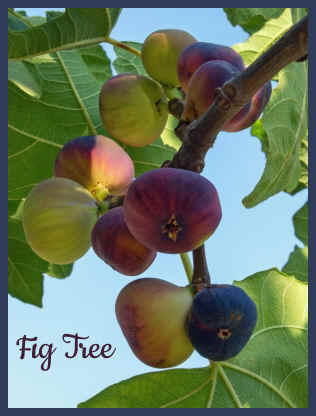 |
Trees and Shrubs
|
Fruits and Vegetables
|
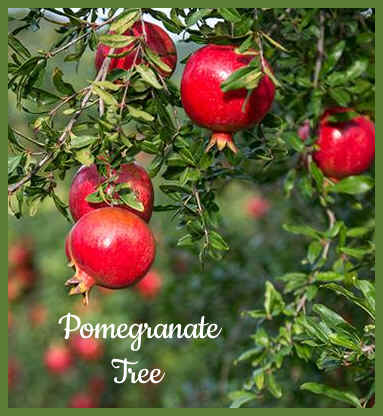 |
|
|
|
| Medicinal Herbs Acacia, aloe, anise, caraway, castor
beans, cassia, coriander, cumin, |
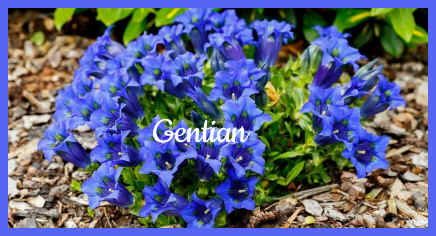 |
Sources:
Metropolitan Museum of Art
Wikipedia
The Gardens of Ancient Egypt, Jim Dunn
British Museum
Quick Links
Vintage Botanical and Nature Illustration Collections
Content, graphics,
photos and design ©2020 marysbloomers.com
All rights reserved

